Lob Alternatives
Considering a switch from Lob? Here are 10 direct mail automation alternatives, compared in-depth to help you select the best platform.

Lob is a popular choice for direct mail automation, and for good reason. Many businesses use it to send postcards and letters. It performs especially well for developers who need a strong API to integrate mail services directly into their applications.
However, like any tool, it has limits. Some users say the pricing can be complex or that customer support is sometimes slow. This might lead you to look for other options. We've analyzed the best alternatives to help you shortlist your choices. Let's get started.
Recruit Digital Workers with 11x
If your sales team is looking to add digital workers, 11x offers a platform to build and deploy them. These workers can handle tasks like lead research and outreach, allowing your team to focus on closing deals.
At 11x, we provide a GTM platform where AI agents manage your sales process. Our agent Alice finds prospects, runs outreach on email and LinkedIn, and updates your CRM. A second agent, Julian, qualifies inbound leads and books meetings. This replaces separate tools for data, outreach, and email warmup.
Lob Alternatives
Here, we examine the main alternatives to Lob. Each review breaks down pricing, key features, and the specific benefits and potential downsides you might find compared to Lob.
1) PostGrid

PostGrid is a cloud-based platform with a REST API for offline communication. Companies use it to send personalized letters, postcards, and checks. The service validates and standardizes global addresses in real time and tracks each mail piece to delivery. It meets compliance standards like HIPAA.
Common uses include marketing postcards, campaign fulfillment, and bulk address database cleanses before large mail drops.
PostGrid's Main Features
- Automates on-demand or bulk mailings like letters and postcards using REST calls and integrates with CRMs like Salesforce and HubSpot.
- Verifies addresses in over 245 countries with CASS & SERP certification and processes up to 200,000 addresses per bulk upload.
- Offers a two-day production service level agreement (SLA) with smart print-vendor routing and real-time tracking of mail status.
- Meets compliance standards including HIPAA, SOC-2, and PCI-DSS, providing enterprise-grade data encryption and governance.
How PostGrid Compares to Lob
Average Review score: 4.9/5 stars based on 176 G2 reviews.
- PostGrid offers compliance with HIPAA, SOC-2, and PCI-DSS. This makes it a suitable option for industries with strict data security needs, a feature not specified for Lob.
- Its global address verification covers over 245 countries. This provides a broader reach for international campaigns compared to services with less extensive global support.
- The platform includes a two-day production service level agreement (SLA). This offers more predictable timelines for mail pieces than services without a publicly stated SLA.
- It supports the dispatch of checks in addition to letters and postcards. This adds flexibility for financial communications, whereas Lob focuses more on marketing and transactional mail.
Where PostGrid May Fall Short
- Some users find the setup for PostGrid complex, and implementation takes about one month. In comparison, developers often integrate Lob more quickly through its API.
- The platform offers a limited variety of design templates. This is different from Lob, which provides more flexibility for custom designs, especially for those who use its API.
- According to some users, the dashboard can perform slowly at times. This may cause delays when you manage campaigns, which can be a drawback for time-sensitive projects.
PostGrid vs. Lob: A Cost Analysis
PostGrid does not publish its pricing, making a direct cost comparison with Lob difficult. Some users note that PostGrid can be more expensive for very small mail volumes, so for the most accurate information, we recommend visiting PostGrid's official website.
2) Postalytics

Postalytics is a cloud-based platform for direct mail automation. It allows businesses to create, personalize, send, and track physical mail. The platform connects with CRMs and marketing automation tools, which enables users to monitor delivery and response data in real time.
Common uses include lead generation, customer acquisition, and multi-touch campaigns that combine direct mail with email. Marketers can measure ROI through built-in analytics dashboards.
Postalytics's Main Features
- Automates triggered, multi-touch, and drip campaigns with no minimum print runs.
- Provides free QR codes and personalized URLs (pURLs) and tracks delivery events like forwarded or returned mail.
- Includes real-time dashboards and campaign analytics with a built-in ROI calculator to measure performance.
- Supports omnichannel campaigns by combining direct mail with email and other digital journeys.
How Postalytics Compares to Lob
Average Review score: 4.5/5 stars based on 12 G2 reviews.
- Postalytics includes patented personalized URLs (pURLs) and QR codes to track online responses from mail. This offers a more direct way to measure campaign engagement compared to Lob's standard delivery tracking.
- The platform provides built-in analytics dashboards and an ROI calculator to measure campaign performance directly. This is different from Lob, where users often need external tools to calculate return on investment.
- It allows for triggered drip campaigns with no minimum print volume, which is useful for small-batch mailings. While Lob also supports automated mail, Postalytics focuses on this for multi-touch marketing journeys.
- Its integration with CRM workflows, like those in HubSpot, allows for automatic mail triggers. This presents a more native marketing automation approach compared to Lob's developer-focused API integration.
Where Postalytics May Fall Short
- Some users report the user interface can feel slow at times. This experience differs from Lob, where developers often interact directly with a fast API instead of a complex dashboard for campaign management.
- The platform may involve print-quality trade-offs for premium brands. In comparison, Lob's API offers more flexibility for custom designs, which gives users greater control over the final appearance of their mailers.
- Its reliance on CRM integrations for drip campaigns is ideal for marketers. Developers who need to build complex, custom workflows from the ground up may find Lob's more flexible API a better fit.
Postalytics vs. Lob: A Cost Analysis
Postalytics does not publicly disclose its pricing, which makes a direct cost comparison with Lob difficult. For the most accurate and up-to-date pricing information, we recommend visiting Postalytics's official website.
3) ClickSend
ClickSend is a business communications platform with services beyond direct mail, such as SMS, email, and voice. It provides a single interface for companies to manage outreach across multiple channels, which can be useful for integrated marketing efforts.
Businesses use ClickSend for multi-channel marketing campaigns, to send appointment reminders via SMS, and to deliver transactional notifications. Its API allows for integration into existing software for automated communication workflows that combine digital and physical mailers.
ClickSend's Main Features
- Offers communication across multiple channels, such as SMS, email, voice, and direct mail, from a single platform.
- Provides a REST API that allows developers to integrate its communication services into their own applications and systems.
- Includes an online address book and supports bulk contact uploads to manage large-scale campaigns efficiently.
- Features a print-to-post gateway that lets users send letters from their computers without direct API integration.
How ClickSend Compares to Lob
- ClickSend provides a broader range of communication channels, such as SMS and email, while Lob specializes in direct mail automation. This makes ClickSend a choice for omnichannel campaigns.
- It offers a dashboard-centric approach that may appeal to marketers, whereas Lob is more developer-focused with its API-first model to send mail.
- ClickSend's print-to-post gateway offers a simple way to send physical mail. This can be more straightforward for users who do not need the deep integration capabilities of Lob's API.
Where ClickSend May Fall Short
- Some users find its user interface less intuitive than more modern platforms. This may result in a steeper learning curve for new team members.
- While it offers direct mail, its feature set in this area may not be as extensive as Lob's. Lob is a specialized tool for mail automation.
- The platform's pricing can become complex with the use of multiple channels. This requires careful management to control costs across different communication types.
ClickSend vs. Lob: A Cost Analysis
ClickSend operates on a pay-as-you-go pricing model, where costs vary based on the communication channel, volume, and destination country. For detailed pricing, it is best to consult the official ClickSend website, as rates are subject to change.
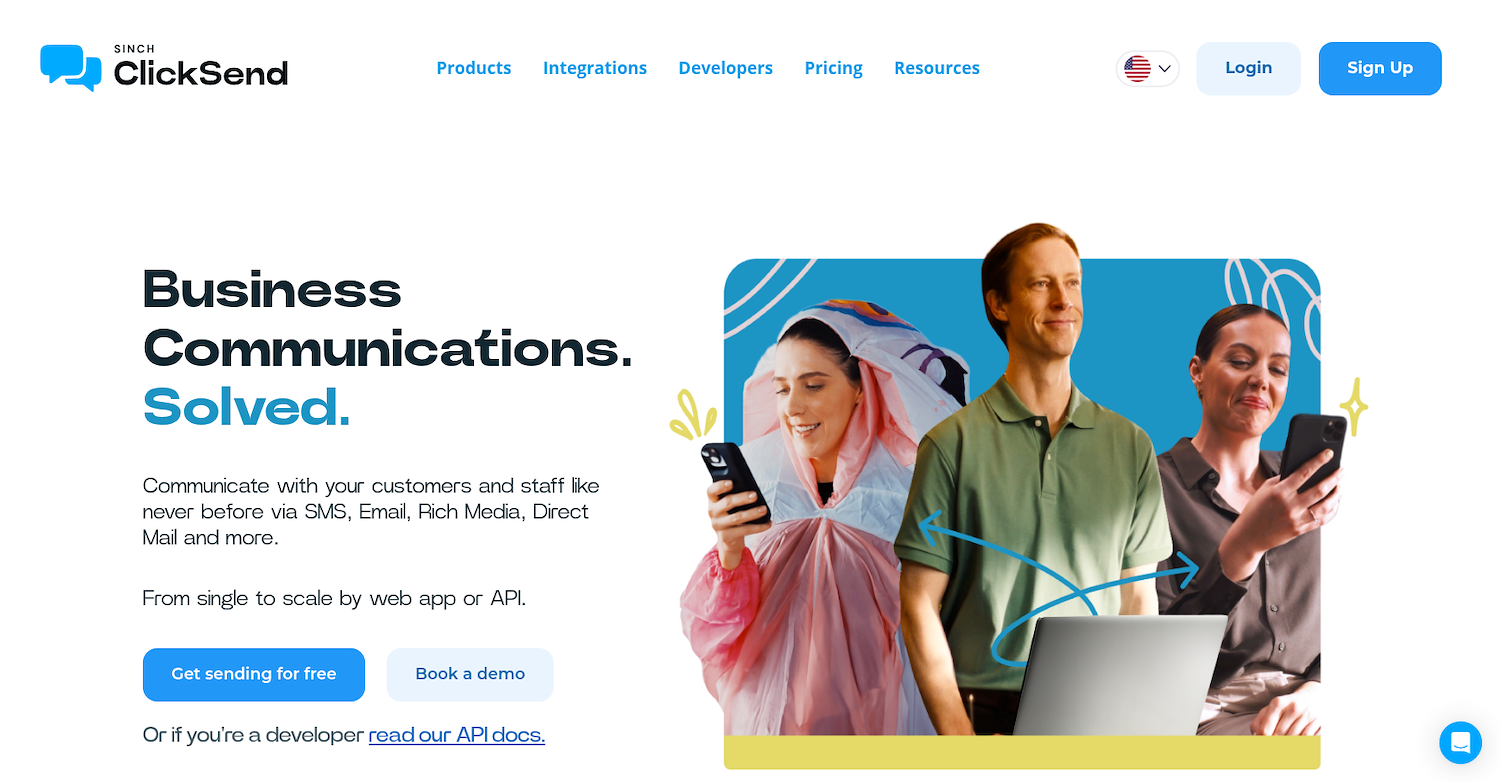
ClickSend is a business communications platform. It offers services beyond direct mail, like SMS, email, and voice. A single interface helps companies manage outreach across multiple channels for integrated marketing efforts.
Businesses use it for multi-channel campaigns, appointment reminders, and transactional notifications. Its API allows integration into existing software to automate workflows that combine digital and physical mailers.
ClickSend's Main Features
- Offers communication across multiple channels, including SMS, email, voice, and direct mail, from a single platform.
- Provides a REST API for developers to integrate communication services into their applications and systems.
- Includes an online address book and supports bulk contact uploads to manage large-scale campaigns.
- Features a print-to-post gateway that sends letters from a computer without direct API integration.
How ClickSend Compares to Lob
Average Review score: 4.1/5 stars based on 48 G2 reviews.
- ClickSend provides a multi-channel platform for SMS, email, and voice, while Lob focuses specifically on direct mail automation.
- The platform includes an online fax gateway to send and receive faxes globally, a feature not available with Lob.
- It supports two-way SMS messaging for interactive customer conversations. This differs from Lob's one-way direct mail delivery model.
- ClickSend's print-to-post gateway offers a simple method to send letters from a computer, which can be more direct for users who do not need Lob's API.
Where ClickSend May Fall Short Compared to Lob
- ClickSend offers direct mail as one of many services. This is different from Lob, which focuses only on mail automation and provides more specialized features like advanced mail tracking and analytics.
- Its API may not provide the same depth for developers as Lob's API. Technical teams that need to build complex, custom mail workflows might prefer Lob's more granular controls.
- Some users in regulated fields might find its compliance features for mail are not as defined as Lob's. For example, Lob offers specific support for industries that require standards like HIPAA.
ClickSend vs. Lob: A Cost Analysis
While we've covered key features and use cases in this comparison, pricing models can vary significantly between tools. For the most accurate and up-to-date pricing information, we recommend visiting ClickSend's official website.
4) Sendoso
Sendoso is a sending platform for direct mail, company swag, and eGifts. It helps sales and marketing teams engage customers, build relationships, and accelerate deals. This focus on engagement differs from Lob's developer-centric model for mail automation.
Teams use the platform to send personalized items for account-based marketing (ABM) campaigns or to reward loyal customers. It integrates with CRM and sales tools, which allows users to trigger sends from existing workflows and track the impact on revenue.

Sendoso is a platform for direct mail, company swag, and eGifts. Sales and marketing teams use it to engage customers, build relationships, and accelerate deals. Its focus is on engagement rather than developer-centric mail automation.
Teams use the platform for personalized items in account-based marketing campaigns or as rewards for loyal customers. It integrates with CRM and sales tools to trigger sends from workflows and measure the impact on revenue.
Sendoso's Main Features
- Offers a worldwide marketplace of curated gifts and premium brand items, with owned warehouses for global storage, kitting, and fulfillment.
- Provides over 90 native integrations that automate sending within existing go-to-market technology stacks.
- Includes an AI-powered “SmartSend” feature that provides recommendations for personalized and timely gifts.
- Features full-stack reporting dashboards for campaign attribution and operates on a SOC-2 compliant infrastructure with a secure address confirmation workflow.
How Sendoso Compares to Lob
Average Review score: 4.5/5 stars based on 1,176 G2 reviews.
- Sendoso provides a marketplace for sending company swag, eGifts, and other physical items. This is different from Lob, which focuses on automating the delivery of letters and postcards.
- It integrates directly with sales and marketing tools. This allows teams to send items from their existing workflows, unlike Lob's API-first approach built for developers.
- The platform includes warehousing and fulfillment services. This lets companies store their own branded items to send on demand, a feature not central to Lob's mail automation service.
- An AI-powered feature provides recommendations for personalized gifts to send at the right time. This contrasts with Lob, where users define the mail pieces and triggers for their campaigns.
Where Sendoso May Fall Short Compared to Lob
- Sendoso's platform centers on gifting, so its direct mail features may not be as specialized as Lob's. Developers who need deep customization for letters and postcards might find Lob's API offers more granular control.
- The tool is designed for sales and marketing teams and integrates with CRMs. This is different from Lob's API-first model, which gives developers the tools to build complex, custom mail workflows.
- Some users note that its pricing model, which includes physical gifts and warehousing, can be more expensive. Businesses that only need to send letters or postcards may find Lob's mail-focused service more cost-effective.
Sendoso vs. Lob: A Cost Analysis
While we've covered key features and use cases in this comparison, pricing models can vary significantly between tools. For the most accurate and up-to-date pricing information, we recommend visiting Sendoso's official website.
5) Reachdesk
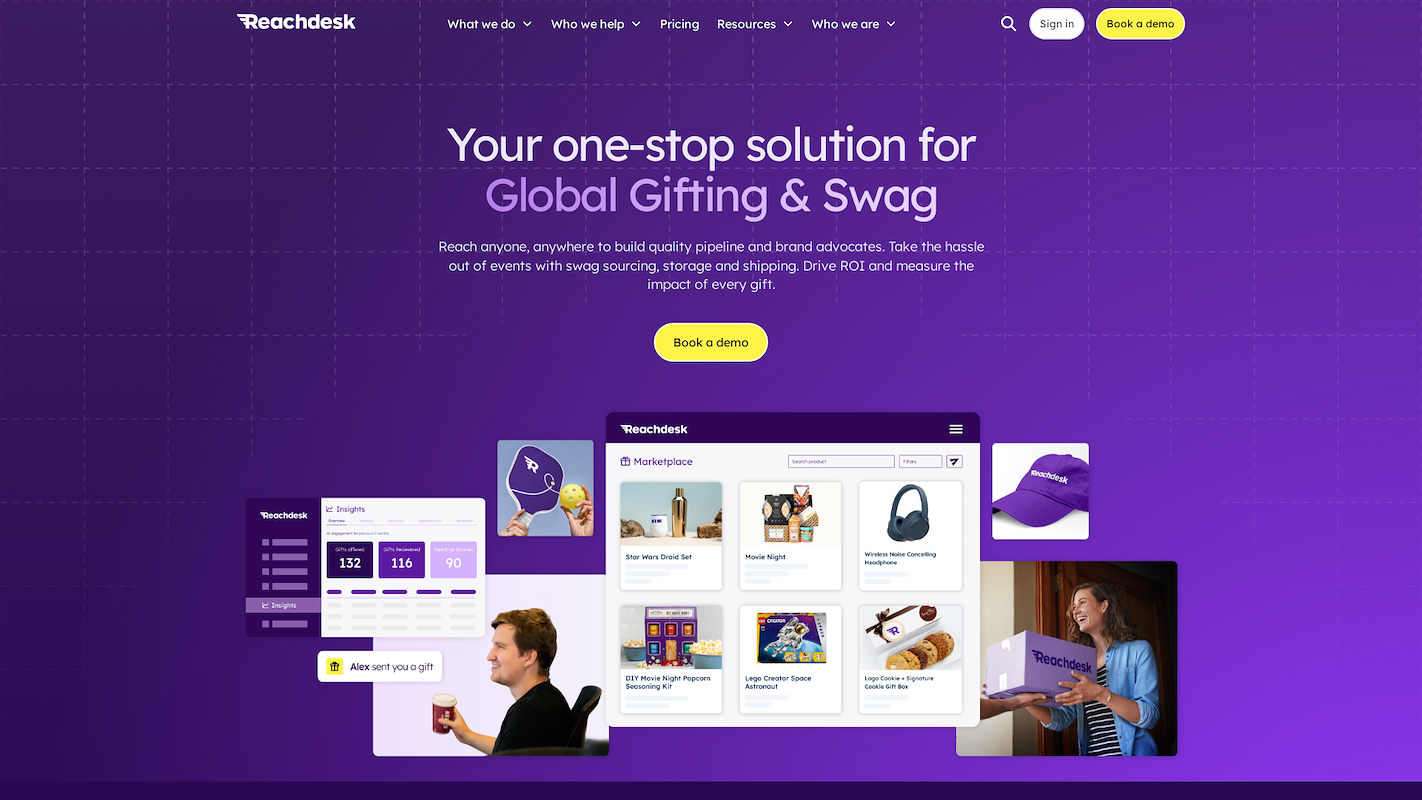
Reachdesk is a global platform for corporate gifts. It helps B2B companies with outreach through a marketplace of items, eGifts, and direct mail. Teams use it for account-based marketing and to accelerate sales.
Typical uses are to send personalized items to prospects or physical mail to connect with dormant accounts. The platform connects with a company's tech stack to automate the process and measure results.
Reachdesk's Main Features
- Offers a global marketplace with a curated catalog of gifts, eGifts, and merchandise available in over 180 countries.
- Provides global warehousing and swag management services that cover sourcing, inventory, and distribution.
- Integrates natively with CRMs and sales tools like Salesforce, HubSpot, and Outreach to automate sends within existing workflows.
- Features dashboards for campaign reports and attribution, with controls to manage and cap spend across teams.
How Reachdesk Compares To Lob
Average Review score: 4.4/5 stars based on 907 G2 reviews.
- Reachdesk provides a global marketplace for corporate gifts and swag. This is different from Lob, which focuses on automating the sending of letters and postcards through its API.
- The platform includes global warehousing and inventory management for a company's own merchandise. Lob, in comparison, does not offer storage services for physical items.
- It integrates directly with sales tools like Salesforce and HubSpot for marketing teams. This contrasts with Lob's developer-centric model, which requires API integration to build mail workflows.
- An AI feature suggests personalized gifts for specific contacts. Lob's personalization, on the other hand, depends on the data and logic that developers build into their API calls.
Where Reachdesk May Fall Short Compared to Lob
- Reachdesk centers on gifting, so its direct mail features may not be as specialized as Lob's. Developers who need deep customization for letters and postcards might find Lob's API offers more granular control.
- The tool is designed for sales and marketing teams and integrates with CRMs. This is different from Lob's API-first model, which gives developers the tools to build complex, custom mail workflows.
- Some users note that its pricing model, which includes physical gifts and warehousing, can be more expensive. Businesses that only need to send letters or postcards may find Lob's mail-focused service more cost-effective.
Reachdesk vs. Lob: A Cost Analysis
While we've covered key features and use cases in this comparison, pricing models can vary significantly between tools. For the most accurate and up-to-date pricing information, we recommend visiting Reachdesk's official website.
Build Your Digital Sales Team with 11x
If you want to expand your sales capabilities, consider adding digital workers. The 11x platform lets you deploy AI agents for lead research, outreach, and appointment scheduling. This frees up your sales team to focus on closing deals and increasing revenue.
At 11x, we use AI to run your sales playbook. Our agent Alice finds accounts, enriches their data, and manages outreach. A second agent, Julian, qualifies prospects and schedules meetings. Our platform replaces separate tools for intent data, outreach, and email warmup.
Book a demo to see 11x in action.
6) Inkit
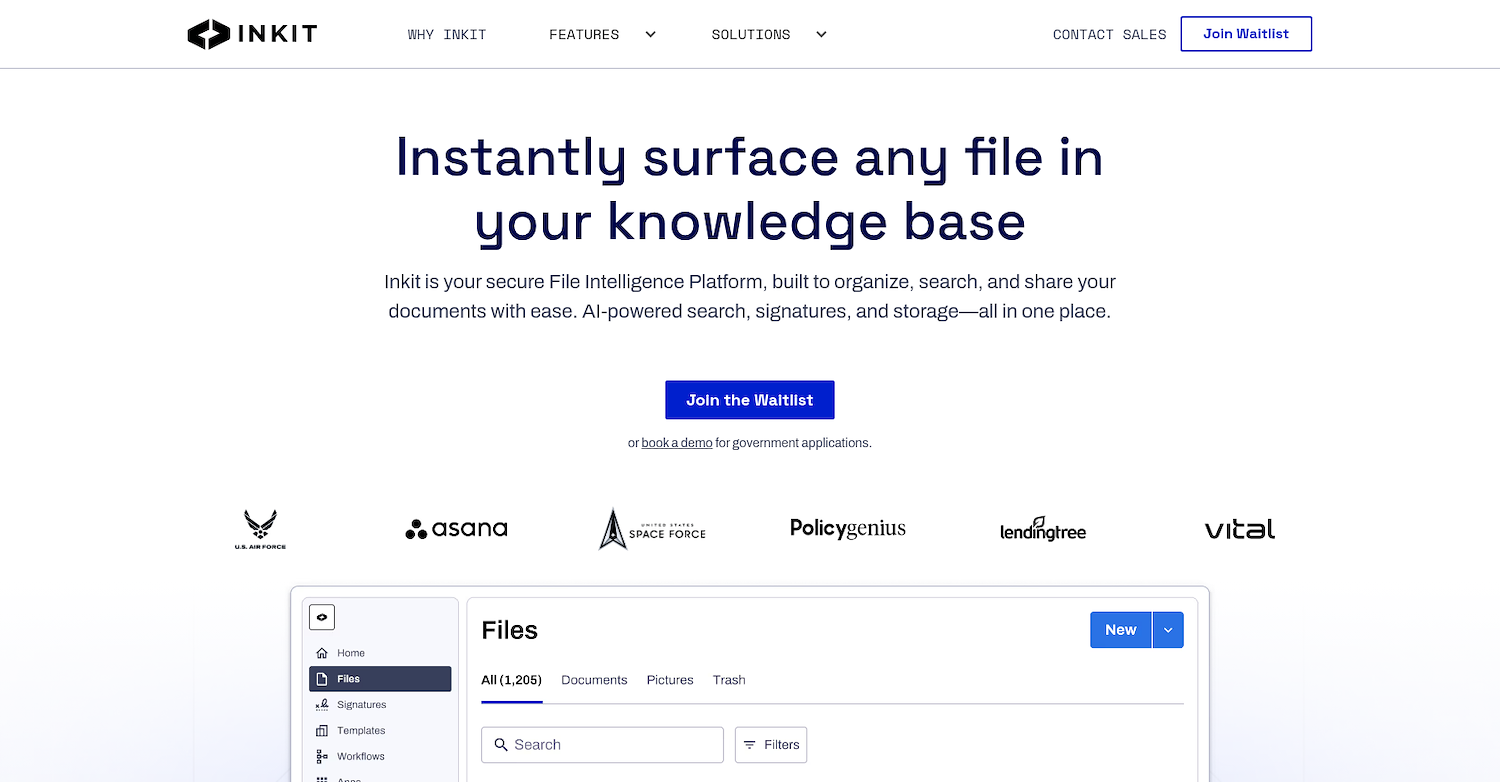
Inkit is a Reach Enablement Platform that automates direct mail, address verification, and document generation. It provides an API for developers to add these services into their applications. The platform helps businesses connect with customers through physical mail and ensures data accuracy.
Companies use Inkit for marketing campaigns, customer re-engagement, and to send transactional mail like invoices. It also supports address data standardization to improve mail deliverability.
Inkit's Main Features
- Offers AI-powered search to find information across a knowledge base without navigating folder hierarchies.
- Converts documents and builds reusable templates to reduce manual work and maintain consistency.
- Sets automated rules to delete or archive files in line with retention policies for full lifecycle control.
- Includes a secure, legally binding digital signature capability within the platform.
How Inkit Compares To Lob
Average Review score: 4.4/5 stars based on 21 G2 reviews.
- Inkit generates various document types, including Word, PowerPoint, and PDF files from templates. This is different from Lob, which focuses on sending postcards and letters via its API.
- The platform offers advanced security, such as IL5+ Department of Defense authorization. This provides a higher level of security for sensitive information compared to Lob's standard compliance.
- It includes a native feature for secure, legally binding digital signatures. Lob does not have a digital signature function, as its service centers on mail delivery.
- This tool automates records retention with rules for archiving or deleting files. This is a document lifecycle management feature not found in Lob, which concentrates on mail automation.
Where Inkit May Fall Short Compared to Lob
- Inkit provides a wide range of document management tools beyond direct mail. This is different from Lob, which specializes only in mail automation and may offer more advanced features for mail-specific campaigns.
- The platform's API might not offer the same level of deep customization for mail as Lob's. Developers who need to build complex, custom mail workflows may prefer Lob's more granular, developer-first approach.
- Some users report that the user interface can feel outdated and the system speed could be better. This may affect teams that need to manage campaigns quickly, a point of contrast with Lob's API-driven workflows.
Inkit vs. Lob: A Cost Analysis
While we've covered key features and use cases in this comparison, pricing models can vary significantly between tools. For the most accurate and up-to-date pricing information, we recommend visiting Inkit's official website.
7) Quadient Inspire
Quadient Inspire is a customer communications management (CCM) platform for large enterprises. It helps companies design and deliver personalized communications across many channels. Its focus is on regulated industries like finance and insurance, which require strict governance over customer-facing documents.
Companies use it to create complex documents like statements, policies, and contracts. The platform ensures brand consistency and compliance for all touchpoints, from print to digital. It is built for enterprise operations that need robust control over their entire communication lifecycle.
Quadient Inspire's Main Features
- Integrates data from core systems to create personalized, omnichannel communications for print, email, and mobile.
- Provides a visual design interface for business users to create and modify communication templates without IT help.
- Includes an interactive communications feature that allows for two-way digital conversations, such as through forms or applications.
- Offers governance and compliance tools to manage content, track changes, and ensure regulatory adherence across all outputs.
How Quadient Inspire Compares To Lob
Average Review score: 4.3/5 stars based on 39 G2 reviews.
- Quadient Inspire is a full CCM suite for enterprise use, while Lob is an API-first tool for direct mail automation.
- It offers omnichannel capabilities, managing communications across print, web, and mobile. Lob specializes in physical mail like postcards and letters.
- The platform is designed for business users with a visual interface. This contrasts with Lob's developer-focused model that requires coding to integrate.
- It has strong governance features for regulated industries. This is a core part of its design, whereas Lob's compliance features are more specific to mail.
Where Quadient Inspire May Fall Short Compared to Lob
- The platform can be complex and may require significant time for implementation and training. Lob's API is often faster for developers to integrate for simple mail tasks.
- Its cost structure is geared toward large enterprises, which could make it less accessible for smaller businesses. Lob's pay-as-you-go model is more flexible for lower volumes.
- For teams that only need to send direct mail, Quadient's broad feature set might be excessive. Lob provides a more focused and direct solution for this specific need.
Quadient Inspire vs. Lob: A Cost Analysis
Quadient Inspire does not publish its pricing, as it is tailored for enterprise needs. For accurate cost information, you should contact their sales team directly through the official website.
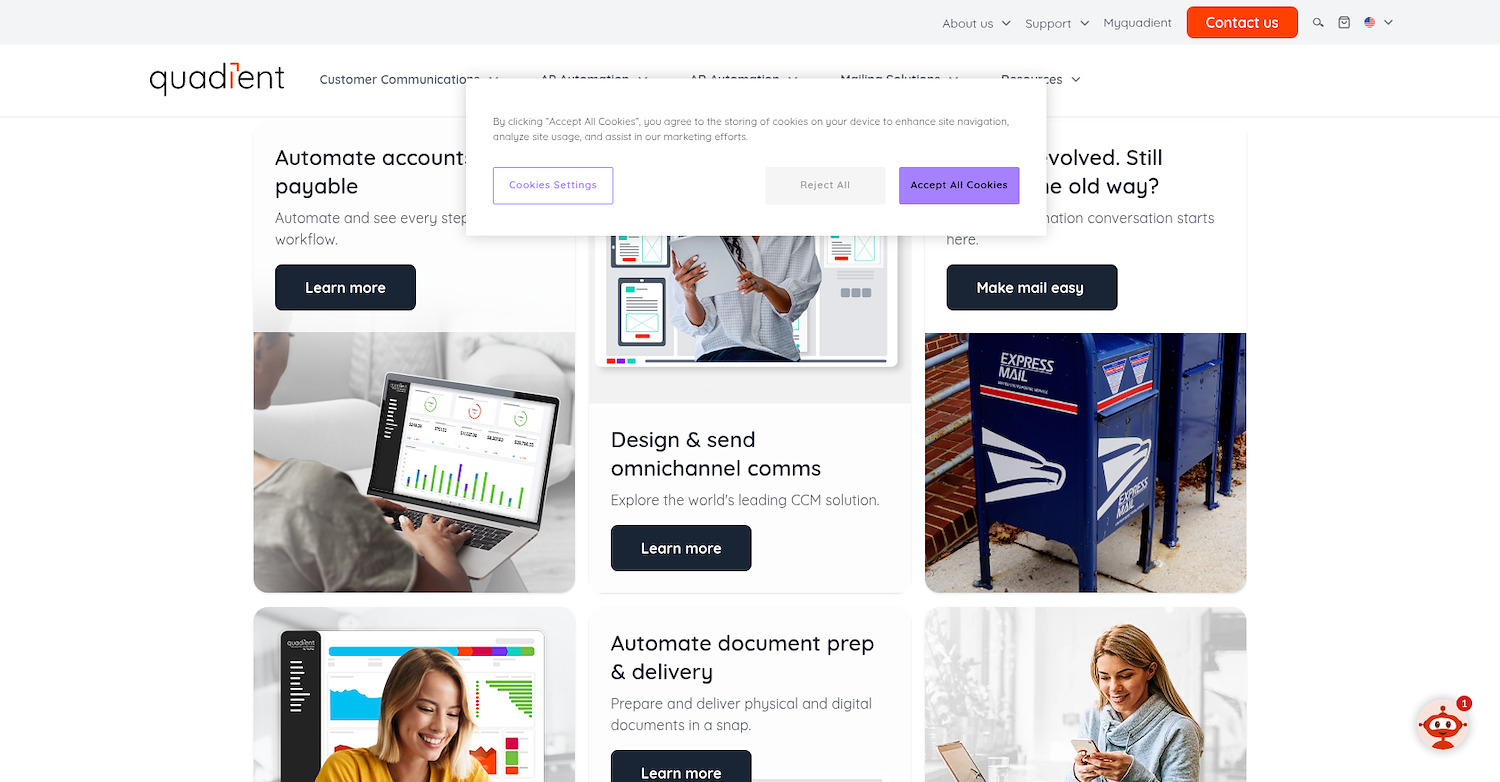
Quadient Inspire is a customer communications management (CCM) platform for large enterprises. It helps companies in regulated industries, like finance and insurance, design and deliver personalized communications across many channels.
Companies use it to create complex documents such as statements, policies, and contracts. The platform focuses on brand consistency and compliance for all touchpoints, from print to digital.
Quadient Inspire's Main Features
- Visualises customer journeys, detects pain points, and triggers context-aware communications through its Inspire Journey module.
- Empowers business users to personalize and approve messages in real time with low-code content editing, which removes IT bottlenecks.
- Collects, validates, and routes data across the organization using intelligent, interactive forms known as Inspire iForms.
- Offers AnyPrem deployment flexibility, which allows a choice between SaaS, on-premise, or managed service models to match infrastructure requirements.
How Quadient Inspire Compares To Lob
Average Review score: 4.8/5 stars based on 122 G2 reviews.
- Quadient Inspire manages communications across print, email, and mobile, offering a multi-channel approach. In comparison, Lob focuses on sending physical mail like letters and postcards.
- It provides a visual design interface for business users to create templates. This differs from Lob's developer-focused model, which requires code for integration and design.
- The platform includes tools to map the customer journey and trigger communications based on behavior. Lob executes mail sends based on API calls without native journey analytics.
- This tool offers flexible deployment options, including SaaS and on-premise models. This provides more infrastructure choices compared to Lob's cloud-only API service.
- It supports multi-user access, which allows teams to collaborate on communications. Lob's API-first model is generally used by individual developers within their applications.
Where Quadient Inspire May Fall Short
- Some users note the platform can be resource-intensive, which may require significant system resources to operate efficiently. Lob is a cloud-native API, so it does not place similar demands on a user's local infrastructure.
- The platform sometimes generates cryptic error messages, which can complicate the debugging process for technical teams. In contrast, Lob's API is designed for developers and typically offers more straightforward error handling.
- Its cloud support is noted by some as being limited compared to its on-premise capabilities. This differs from Lob, which is built as a cloud-first service and provides all its functionality through an API without needing on-premise installation.
Quadient Inspire vs. Lob: A Cost Analysis
While we've covered key features and use cases in this comparison, pricing models can vary significantly between tools. For the most accurate and up-to-date pricing information, we recommend visiting Quadient Inspire's official website.
8) Thanks.io
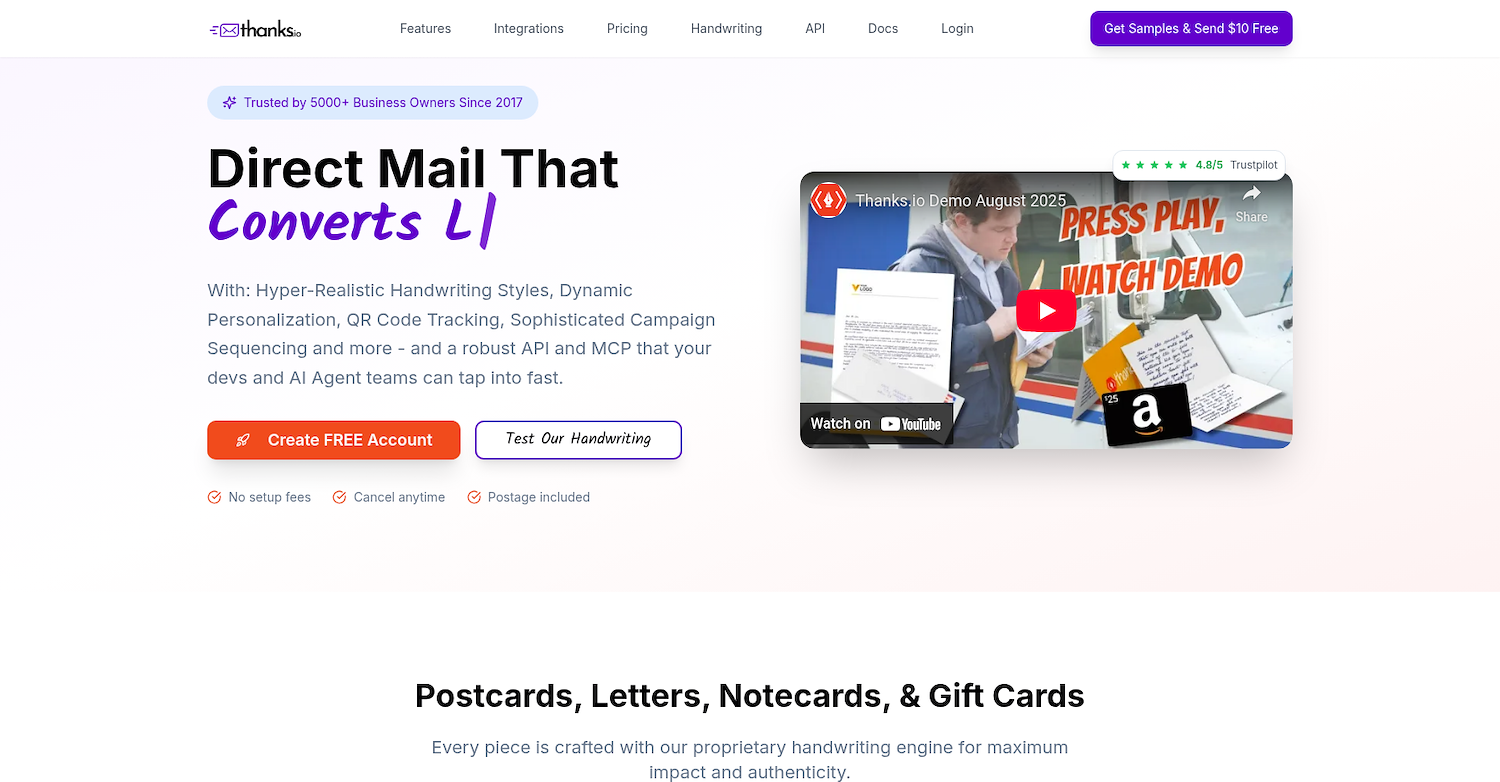
Thanks.io is a platform for direct mail automation. It sends postcards, letters, and notecards that use handwritten fonts for a personal touch. Businesses use the service to connect with prospects, follow up with customers, and promote events.
The platform connects with other business software and provides an API for developers to build custom workflows. This allows for automated mail sends based on specific triggers within a company's existing systems.
Thanks.io's Main Features
- Uses a custom handwriting engine to produce realistic handwriting on mailers.
- Integrates with Canva for in-platform design of postcards and letters.
- Captures physical addresses from website visitors for retargeting campaigns.
- Sends mail directly from the Chrome browser through a dedicated extension.
How Thanks.io Compares To Lob
Average Review score: 4.7/5 stars based on 3 G2 reviews.
- Thanks.io uses a custom handwriting engine to produce realistic-looking text on mailers, which offers a more personal touch compared to Lob's standard printed mail.
- It integrates with Canva, allowing users to create mailer designs directly within the platform. This is different from Lob, where designs are typically managed through its API or templates.
- The platform can capture physical addresses from website visitors for retargeting campaigns. Lob does not have a similar feature and requires users to provide their own mailing lists.
- A Chrome extension lets users send mail directly from their browser. This provides a quick-send option that contrasts with Lob's developer-focused API integration for sending mail.
Where Thanks.io May Fall Short Compared to Lob
- Thanks.io offers a limited number of design types for its mailers. In comparison, Lob's API provides developers more flexibility to create fully custom mail pieces without template restrictions.
- The platform does not specify enterprise-level compliance certifications like HIPAA. This might make it less suitable for regulated industries that require such standards, where Lob is often used.
- Its API may not provide the same depth for complex mail automation as Lob's. Developers who need granular control for intricate workflows might find Lob's API-first model a better fit.
Thanks.io vs. Lob: A Cost Analysis
Thanks.io offers a free plan and a subscription model at $49 per month, which creates predictable costs for budgeting. Lob operates on a pay-as-you-go basis, which can be more cost-effective for variable mail volumes. For the most current rates, consult Thanks.io 's official website.
9) SolutionReach? wait wrong?
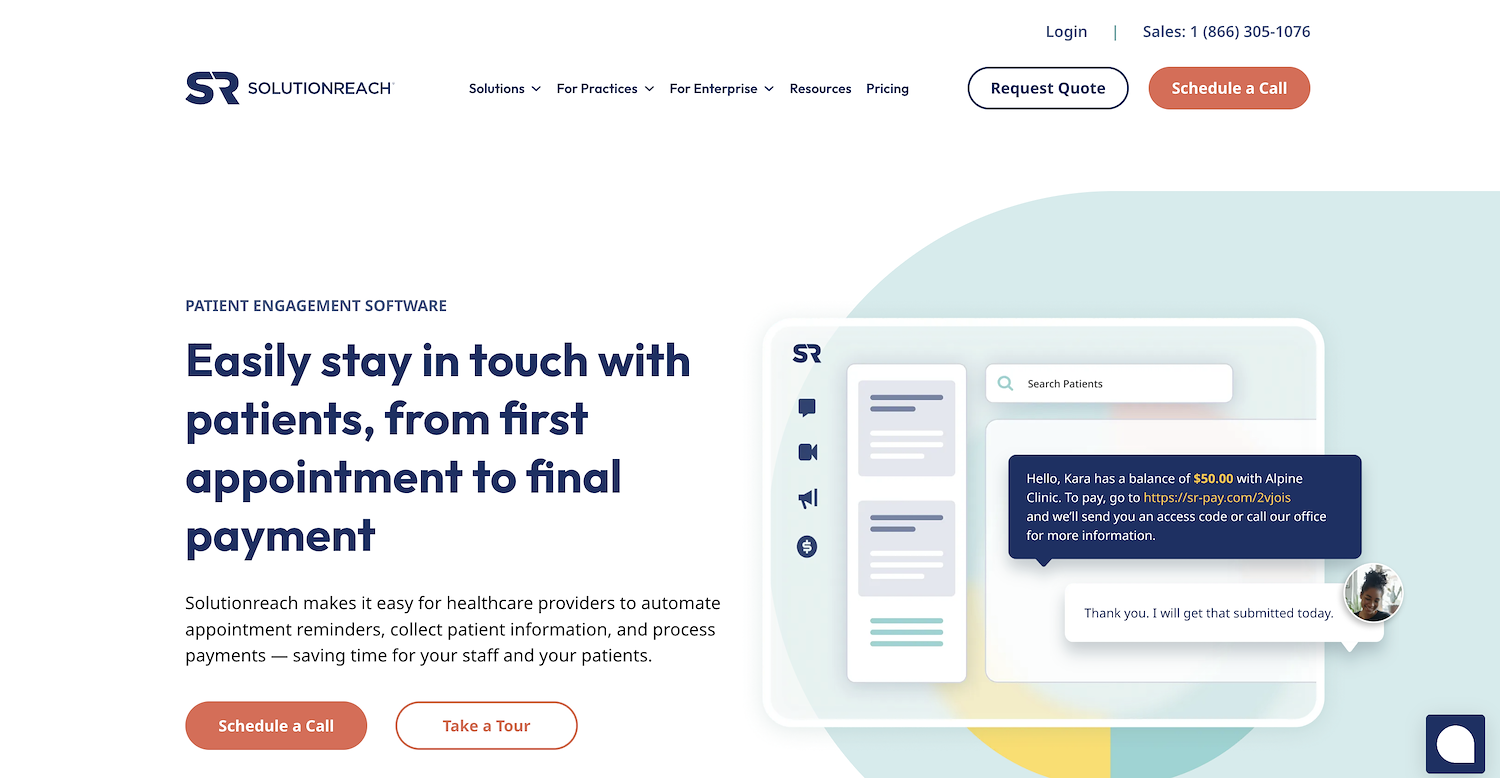
SolutionReach is a patient relationship management platform for healthcare practices. It automates communications like appointment reminders, recalls, and surveys. The system uses digital channels such as text, email, and voice calls for patient outreach.
This platform does not focus on direct mail services like postcards or letters. Its purpose is patient engagement within a healthcare context, which differs from the other tools on this list.
SolutionReach? wait wrong?'s Main Features
- Offers HIPAA-compliant messaging with user authorization and compliant texting.
- Includes mobile patient intake and check-in features.
- Integrates with appointment schedulers to manage patient bookings.
How SolutionReach Compares To Lob
Average Review score: 4.3/5 stars based on 167 G2 reviews.
- SolutionReach provides HIPAA-compliant messaging for secure patient communication. This is a specific feature for healthcare, while Lob offers more general security standards for mail.
- It includes patient relationship management and intake tools to handle the patient journey. Lob, in contrast, focuses on the single action of sending mail through an API.
- The platform integrates with appointment schedulers to automate patient reminders. This is a specialized function for service-based businesses, whereas Lob's API is a general-purpose tool for mail campaigns.
- This tool uses digital channels like text, email, and voice for patient outreach. This multi-channel approach differs from Lob's focus on physical direct mail.
Where SolutionReach May Fall Short Compared to Lob
- SolutionReach does not have features for creating or sending physical mail. In contrast, Lob's API allows developers to fully customize postcards and letters with variable data for personalized marketing campaigns.
- The tool is designed specifically for healthcare patient management. This narrow focus may make it unsuitable for businesses in other sectors, unlike Lob, which provides a flexible mail API for any industry.
- Some teams may find its platform less flexible for custom development. Lob, on the other hand, is an API-first product that gives developers direct control to build complex, automated mail workflows from scratch.
SolutionReach vs. Lob: A Cost Analysis
SolutionReach does not publish its pricing, as it is tailored to individual healthcare practices. For the most accurate and up-to-date pricing information, we recommend visiting the SolutionReach official website.
10) Direct Mail Manager
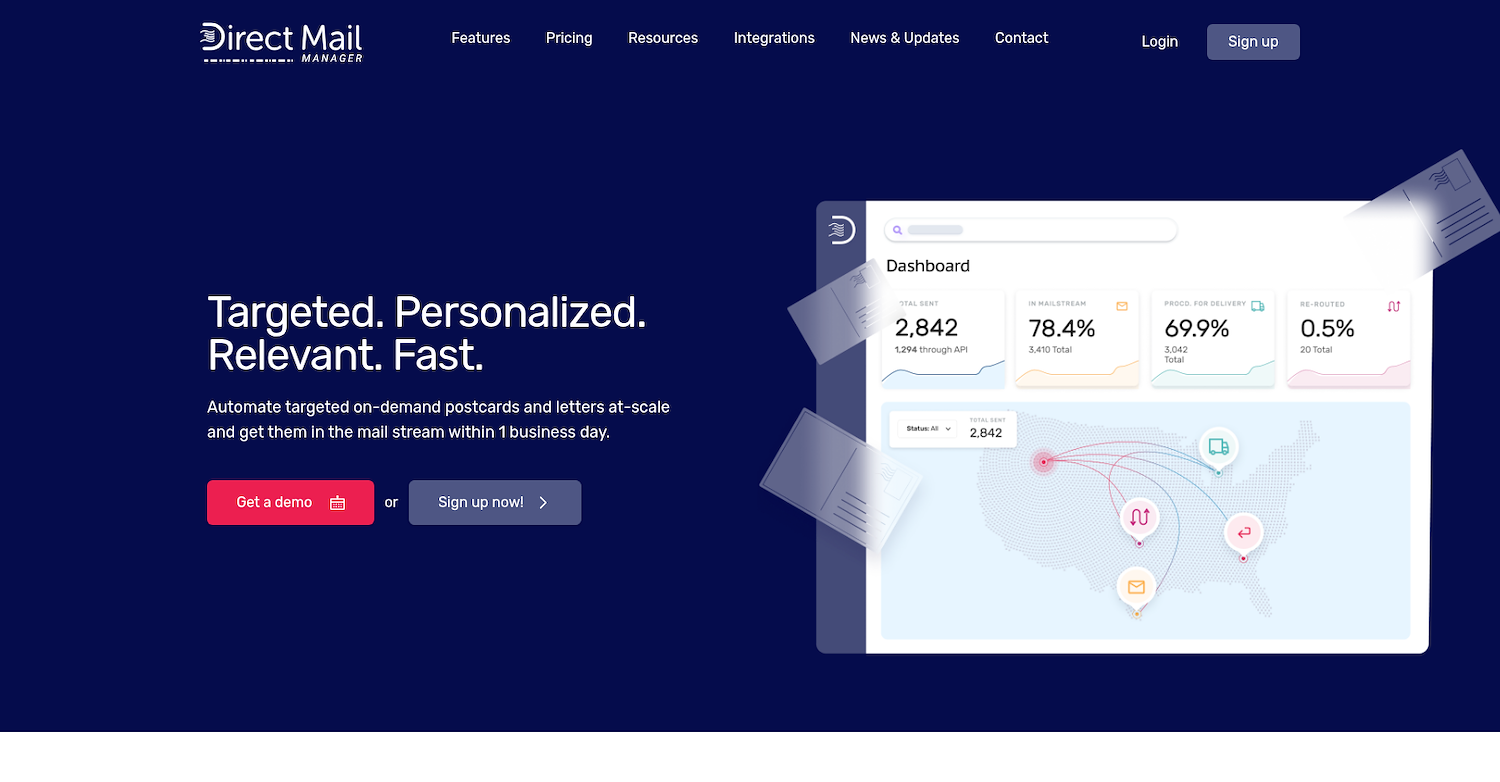
Direct Mail Manager is a platform for direct mail automation. Sales and marketing teams use it to send and track personalized postcards, letters, and brochures. The service connects with CRMs to trigger mail based on customer actions.
Businesses use it for lead nurture campaigns, customer retention, and event promotions.
Direct Mail Manager's Main Features
- Automates direct mail to integrate physical mail into marketing campaigns.
- Provides tools to manage emails and track email campaign performance.
- Offers customization options for creating personalized mail pieces.
How Direct Mail Manager Compares To Lob
Average Review score: 4.5/5 stars based on 4 G2 reviews.
- Direct Mail Manager includes tools to manage and track email campaigns in addition to direct mail. This provides a multi-channel approach within one platform, unlike Lob, which focuses only on physical mail.
- The platform offers a subscription model that includes a free tier, which can make budgeting more predictable. This is different from Lob's pay-as-you-go structure that bases costs on usage.
- It is designed for sales and marketing teams with an emphasis on ease of use. This contrasts with Lob's API-first model, which is built for developers who need to code integrations.
- This tool provides native integrations with CRMs to trigger mail based on customer actions. While Lob also integrates, its API-centric approach requires more development work to achieve similar automated workflows.
Where Direct Mail Manager May Fall Short
- Some users report potential delays in mail delivery. This experience differs from Lob, where its API gives developers more direct control over production timelines for time-sensitive campaigns.
- The platform's API may not offer the same depth for developers as Lob's. Technical teams that need to build complex, custom mail workflows might prefer Lob's more granular, developer-first tools.
- It does not specify enterprise-level compliance certifications. This might make it less suitable for regulated industries that require standards like HIPAA, which Lob supports for mail automation.
Direct Mail Manager vs. Lob: A Cost Analysis
Direct Mail Manager offers a subscription model with a free plan and a Gold tier for $29.95 per month, which provides predictable costs. In contrast, Lob uses a pay-as-you-go model that can be more cost-effective for variable mail volumes. For the most accurate pricing, visit Direct Mail Manager's official website.
Which One Should You Go With?
Choosing a Lob alternative involves many variables, from budget to technical requirements. This guide has provided several options to help you evaluate which platform best fits your business needs.
If your focus is on sales automation, 11x offers a platform for digital workers. These agents handle lead research and outreach, allowing your sales team to concentrate on closing deals instead of managing multiple tools for data and outreach.




